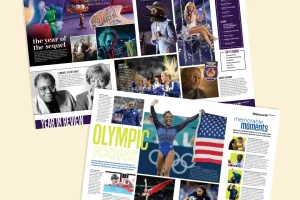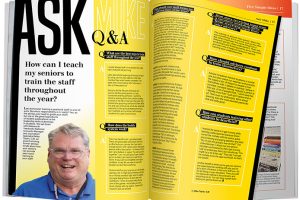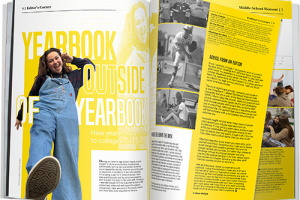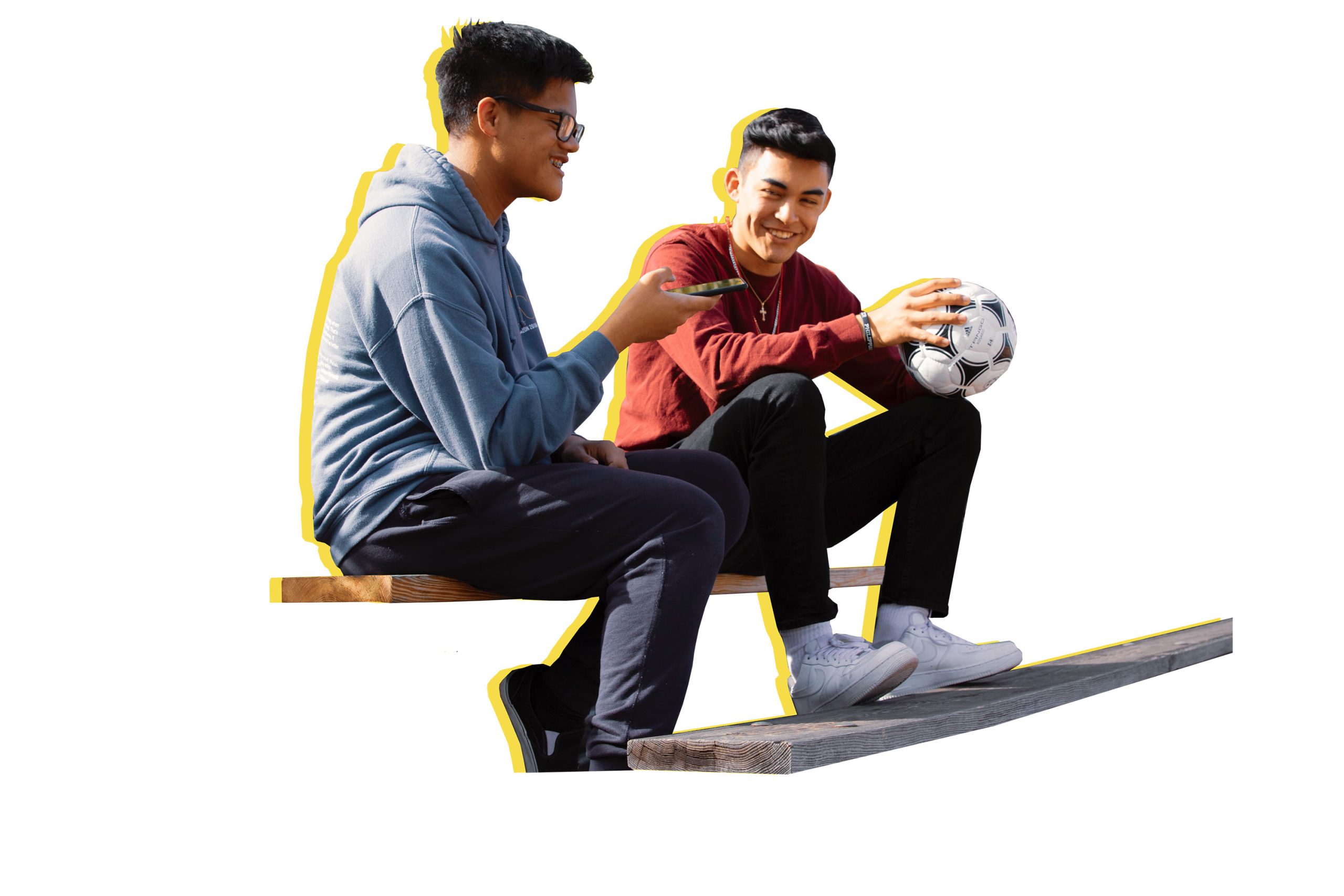
Finding Stories to Capture the Essence of a Year Gone Virtual
With schools beginning in a distance-learning format, we’re forced to reexamine yearbooks. If our yearbooks are going to be memory books, reference books, public relations books and – perhaps most importantly this year – history books, then journalistic, interview-based copy is a crucial component of our 2021 yearbooks. For those who have relied on pictures to tell the story of the year, this might be the perfect opportunity to start incorporating journalistic writing. But we must adjust our story-finding and interview-gathering techniques to meet the moment.
I push the importance of face-to-face interviews upon my students – you’ll get more honest, real-to-life responses than you would through email, text message or social media direct message (DM). Amidst a global pandemic, however, a face-to-face interview might not be possible. Email, text and DM can help schedule the next-best thing: a video chat or a phone call. But parsing through the interview transcript to write a meaningful story can be hard. This article can help.
Find the Story
Pre-COVID-19, I told my students to eavesdrop in the hallways, by lockers and in class. In today’s “new normal,” that’s not going to fly, but that doesn’t mean topic gathering can’t be done. There are two main resources I am telling my students to draw from to gather angles for meaningful stories:
- School counselors, nurses, teachers, coaches, administrators (basically any adult)
Adults on campus have insights into what’s going on in students’ and staff members’ lives. They may be bound to privacy, but it never hurts to ask if they would reach out to individuals struggling with a loved one’s hospitalization due to COVID-19 or job loss due to the pandemic. They can ask if the individual would be willing to be interviewed and then connect them with yearbook students.
It is imperative we amplify these personal stories during this historic year. Twenty years from now, these are the stories that will make the book speak to the gravity of the pandemic. If your book is going to be a history book, it needs to get into the heart of the matter, where the emotions are. Count on campus adults to connect you to those stories.
- Social media accounts (Instagram, TikTok, Twitter, Snapchat, etc.)
We can harness TikTok and other social media apps to comb social media (in lieu of eavesdropping in hallways) for anything of interest. You might discover (like we did) a junior who started a tie-dye business in her newfound downtime or a sophomore who is 3D printing face shields and donating them to essential workers. What we post on social media is often more lighthearted, so these angles can provide a glimpse into the positive stories from the pandemic.
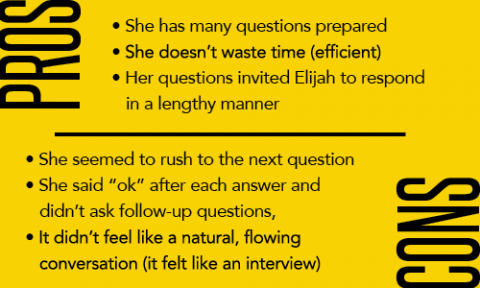 Overcome Interview Fear
Overcome Interview Fear
The interview is usually the most daunting aspect of writing for my first-year students, so it’s important to let them speak openly and honestly about their concerns prior to conducting their first real interview. I recommend creating a safe space (perhaps a group video conference with the adviser moderating) where all staffers can discuss their fears and their hopes/excitements about interviewing. I start this as a five-minute quick-write journaling opportunity to the following prompt, and then open it up to discussion:
What concerns you about interviewing students and adults on campus and why? What excites you and why?
My students are usually worried about making the person they are interviewing feel uncomfortable or are not sure what to do when someone just doesn’t respond. Talking through those concerns is key. They’re often excited to find out more about people, improve their conversational skills, become less shy and make new friends. Keeping the whole-class discussion optimistic and focused on positive outcomes is essential, but it’s important to maintain honesty in this discussion as well. Once students know they’re not alone in their insecurities, they feel more comfortable stepping into the uncomfortable.
Ask Genuine, Open-Ended Questions
Before students attempt their first “face-to-face” interview, be it through Zoom or a traditional phone call, it’s important they feel equipped with the skills to ask deep, probing questions. To set students up for success, we evaluate one of my former student’s interviews. As they listen to and/or read a transcript of an interview conducted with a student-athlete, they complete a T-chart breaking down what Micah did well in her interview and what she could improve upon. Student responses vary, but many students have noted the following regarding Micah’s interview:
After my students reflect individually about Micah’s strengths and areas for improvement, I lead another whole-class discussion based on a series of questions. A few of our discussion items are listed below, but you can see the full list of questions and answers along with the interview transcript on the Walsworth website.
- How many of Micah’s questions are open-ended, and how many are not open-ended? Highlight the open-ended questions in GREEN and the other questions in PINK.
- For the open-ended questions, what words did Micah use to start questions that elicited a thorough response?
- What are some other words we can use to ask open-ended questions?
- Rewrite those closed questions or create a follow-up question for each so that they are open-ended questions.
- What kind of research must Micah have done prior to conducting this interview?
- Highlight the most interesting quote from the initial interview with a yellow highlighter.
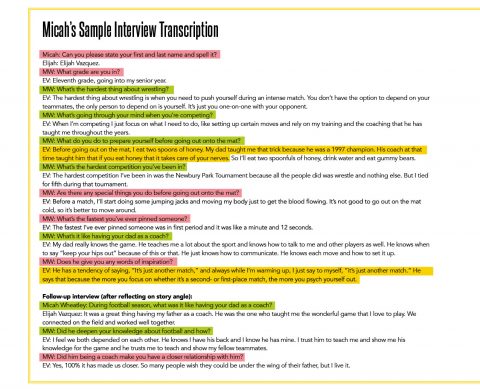 Finally, it’s time for my students to apply what they’ve learned. I have them work individually, in pairs or in groups to consider whom they might interview for a feature story. I urge them to jot down as many open-ended questions as they can. Their next assignment is to conduct that interview. This year, they will conduct their interviews via the video-conferencing method of their choice. They’ll submit a recording of the interview and a transcript for further discussion.
Finally, it’s time for my students to apply what they’ve learned. I have them work individually, in pairs or in groups to consider whom they might interview for a feature story. I urge them to jot down as many open-ended questions as they can. Their next assignment is to conduct that interview. This year, they will conduct their interviews via the video-conferencing method of their choice. They’ll submit a recording of the interview and a transcript for further discussion.
Turn a Rich Interview Into a Concise Story
Once the interview is done, it’s time to select the most meaningful quotes and build a story around them. Meaningful quotes are the ones full of emotion or opinion since the author must avoid editorializing (voicing opinion) at all times. We highlight these in yellow.
Often, it’s important to conduct a follow-up interview and/or interview others to get a well-rounded approach once the initial interview elicits an angle.
Traditionally, yearbook stories are feature articles which follow the LQTQ format, written in past tense. That said, non-traditional story formats, such as quote stories and Q&A’s have been gaining momentum in recent years. No matter what format your students use for their stories, it’s the quotes from those interviews that make the stories meaningful and memorable.
Tag:Yearbook Ideas

